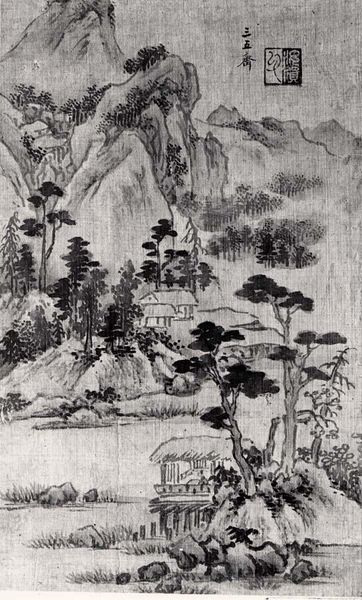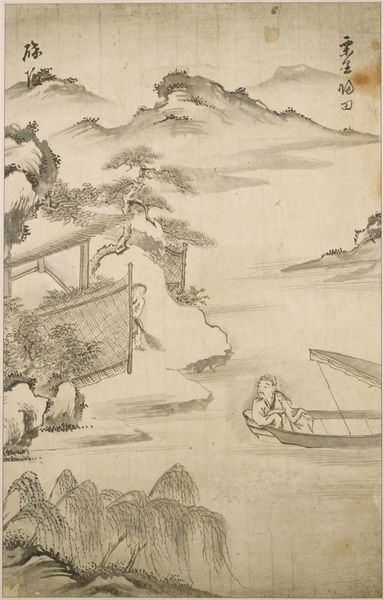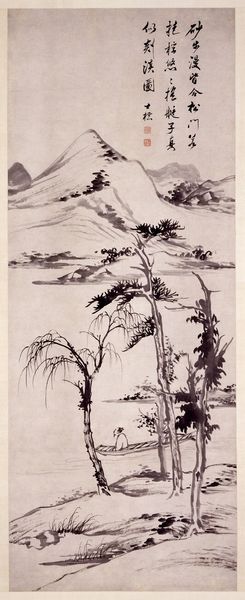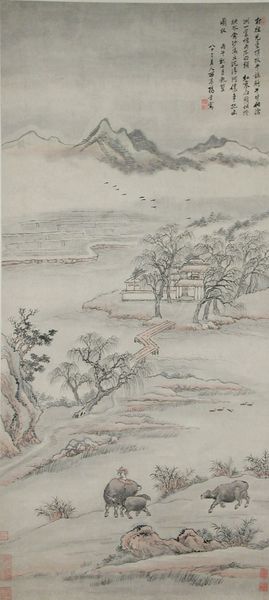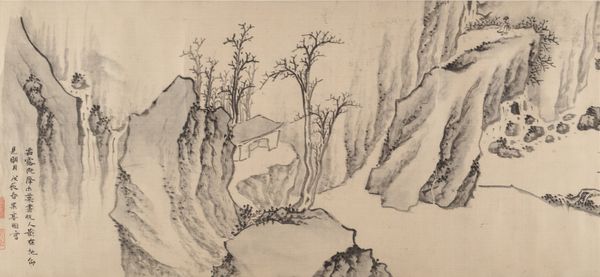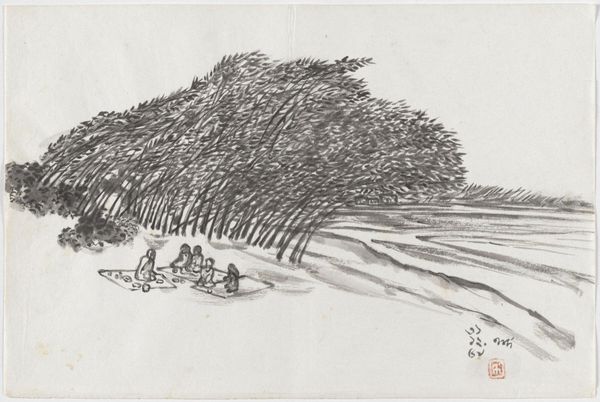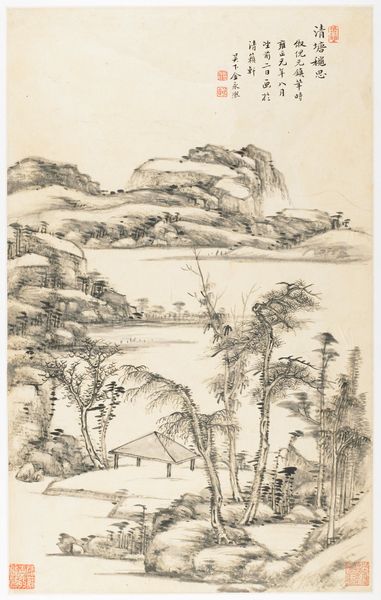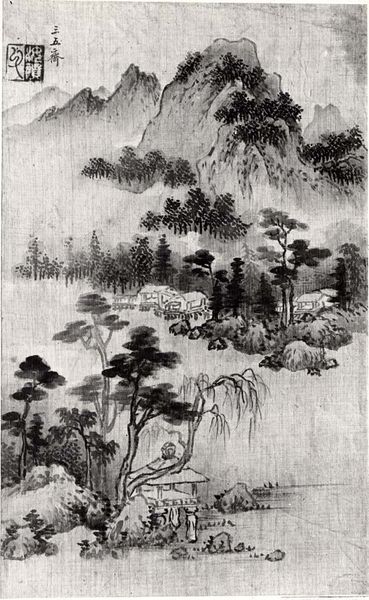
drawing, paper, ink
#
drawing
#
asian-art
#
landscape
#
paper
#
ink
#
orientalism
Dimensions: Image: 12 3/4 x 57 in. (32.4 x 144.8 cm) Overall with mounting: 13 3/16 x 252 15/16 in. (33.5 x 642.5 cm)
Copyright: Public Domain
Curator: Take a moment to observe "Enjoying the Pines" by Shen Zhou, dating back to the Ming Dynasty, sometime between 1368 and 1644. This ink on paper drawing invites us into a serene landscape. Editor: It strikes me as a very introspective piece. The lone figure seems quite small amidst the vastness, almost swallowed by nature's grandeur. It projects a feeling of profound isolation, yet peacefulness at the same time. Curator: Absolutely. The figure’s placement embodies the Daoist principle of finding harmony with nature, a visual representation of withdrawing from the world to contemplate deeper truths. Consider how the pine, a symbol of longevity and resilience in Chinese culture, looms protectively. Editor: And it isn’t just longevity; it speaks to the endurance of cultural values even in the face of social and political upheaval. The scholar's retreat can also be viewed as a form of silent protest or critique of the imperial court, a place for independent thought. Curator: Precisely, it becomes a symbol for artistic and intellectual freedom. This drawing reminds me of similar hermit motifs appearing in later literati painting; the image becomes a stage to show erudition through simplicity. Editor: I agree. Even in the starkness of the monochrome, we discern coded social commentary. How do we reconcile these elite aesthetic values with larger communities outside this scholar-official class? Does this representation serve only to uphold traditional hierarchies? Curator: The question raises pertinent issues on who art history benefits in its telling, right? Despite such challenges, it reminds us of enduring virtues. Perhaps this solitary figure is a mirror reflecting the audience and what values they strive toward. Editor: Perhaps. It’s still intriguing how enduring the image of the recluse remains as a potent symbol even today, as we continuously evaluate our place in rapidly evolving societies. It remains a quiet testament to introspective and thoughtful dissent. Curator: Indeed. Even centuries later, we return to this tranquil scene. Editor: Food for thought for many centuries to come, I'd say.
Comments
No comments
Be the first to comment and join the conversation on the ultimate creative platform.
